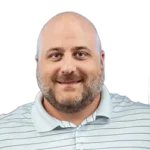In at-fault states, the driver who caused an accident is financially responsible for it, meaning your insurance company (or you) need to come up with compensation for damages if you cause a wreck.
For this reason, at-fault states (or “tort states”) require drivers to carry liability insurance in minimum amounts. If you’re found responsible for causing the accident, your car insurance will pay for damages and injuries up to your policy limits.
You may need more than the state minimum
The largest group of states requires drivers to carry $25,000/$50,000/$25,000 in liability insurance — that’s $25,000 bodily injury liability per person, $50,000 per accident, and $25,000 property damage liability. However, most drivers, especially in at-fault states, may benefit from higher limits. To ensure all your bases are covered, consider investing in limits of 50/100/50 or 100/300/100. That way, you can be sure that your assets and future finances are well-protected.
The District of Columbia and 38 states have at-fault insurance laws.
-
See the full list of states
No-fault states vs. at-fault states
In no-fault states, car accident victims will contact their own insurance provider — not the at-fault driver’s insurance provider — for bodily injury compensation after a crash. Payment responsibilities in no-fault states fall on the insurance providers of everyone involved, not just the at-fault driver’s provider.
No fault states include: AR, FL, HI, KS, KY*, MD, MA, MI, MN, NJ*, NY, ND, OR, PA*, TX, UT, WA. DE has a no fault aspect to its laws in that it requires all drivers to carry Personal Injury Protection (PIP) coverage.
* Drivers in these choice-no-fault states may choose no-fault or limited tort coverage.
Compensation is determined by negligence in at-fault states
In the legal sense of the term, negligence describes a failure to take appropriate action resulting in harm to others. This might include things like not seeing a pedestrian in the road, texting and driving, or hitting the gas instead of the brakes.
In a car accident, fault may be determined in percentages, e.g. one driver is 70% at fault while the other driver is 30% at fault, based on how negligent each driver was in the situation.
Once negligence and fault are established, compensation can be determined based on that data.
If you’re at-fault in a collision in an at-fault state: At-fault drivers should follow a similar process after an accident. Don’t admit fault or place blame on the other driver, and try to remain calm both at the scene of the accident and after. This will help you avoid any extra charges being brought against you.
After a car accident in an at-fault state, regardless of fault, your car insurance premiums may also increase. To combat this, it’s a good idea to shop around for a new policy from a new provider. With a car insurance broker like Jerry, this process takes less than a minute.
Understanding your rights in an at-fault state
Drivers who have experienced severe damages due to a negligent driver usually have the right to sue, but it’s best to employ a qualified personal injury lawyer or law firm to help you out.
Things can get extremely complicated when determining who can sue who after an accident. The validity of your personal injury lawsuit will depend on things like state laws, the amount of insurance the other driver was carrying, the amount of insurance you were carrying, and whether your damages passed a verbal (think “catastrophic injuries” or “wrongful death”) and/or economic threshold.
FAQ
-
What does it mean to be at fault in a collision?
-
Can you claim insurance if the accident was your fault?

Megan Lee is an editor, writer, and SEO expert who specializes in insurance, personal finance, travel, and healthcare. She has been published in U.S. News & World Report, USA Today and elsewhere, and has spoken at conferences like that of NAFSA: Association of International Educators. Megan has built and directed remote content teams and editorial strategies for several websites, including NerdWallet. When she`s not crafting her next piece of content, Megan adventures around her Midwest home base where she likes to drink cortados, attend theme parties, ride her bike and cook Asian food.

Lacie Glover is a Lead Writer and Editor with sixteen years’ experience in the insurance category. Prior to Jerry, she spent more than a decade on NerdWallet’s content team writing, editing and then overseeing the auto insurance category, as well as dabbling in other insurance and automotive topics. Prior to her career in the online personal finance content space, Lacie spent time in the hard sciences, in clinical research and chemistry labs. She has a bachelor’s degree from Colorado State University.









